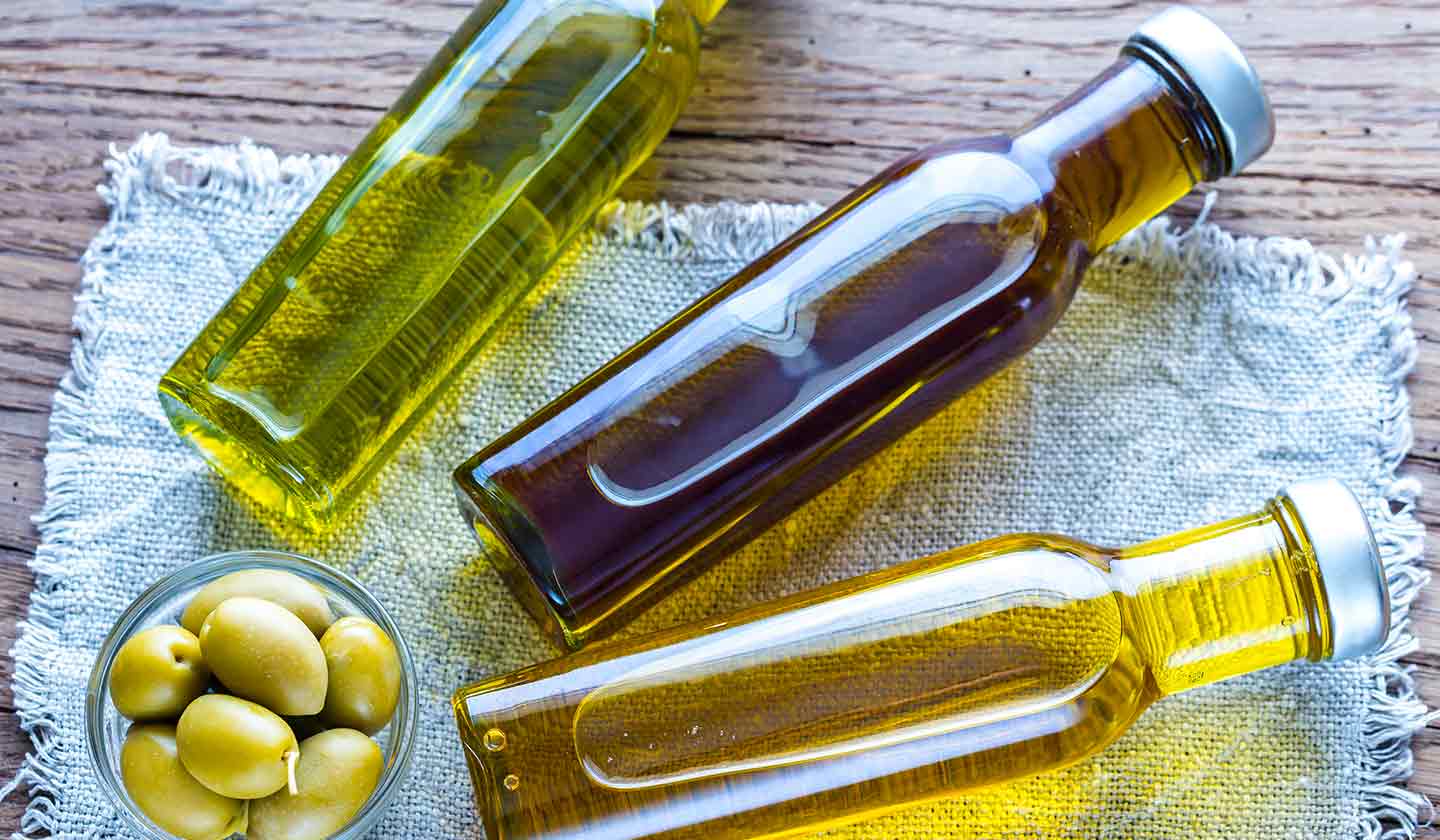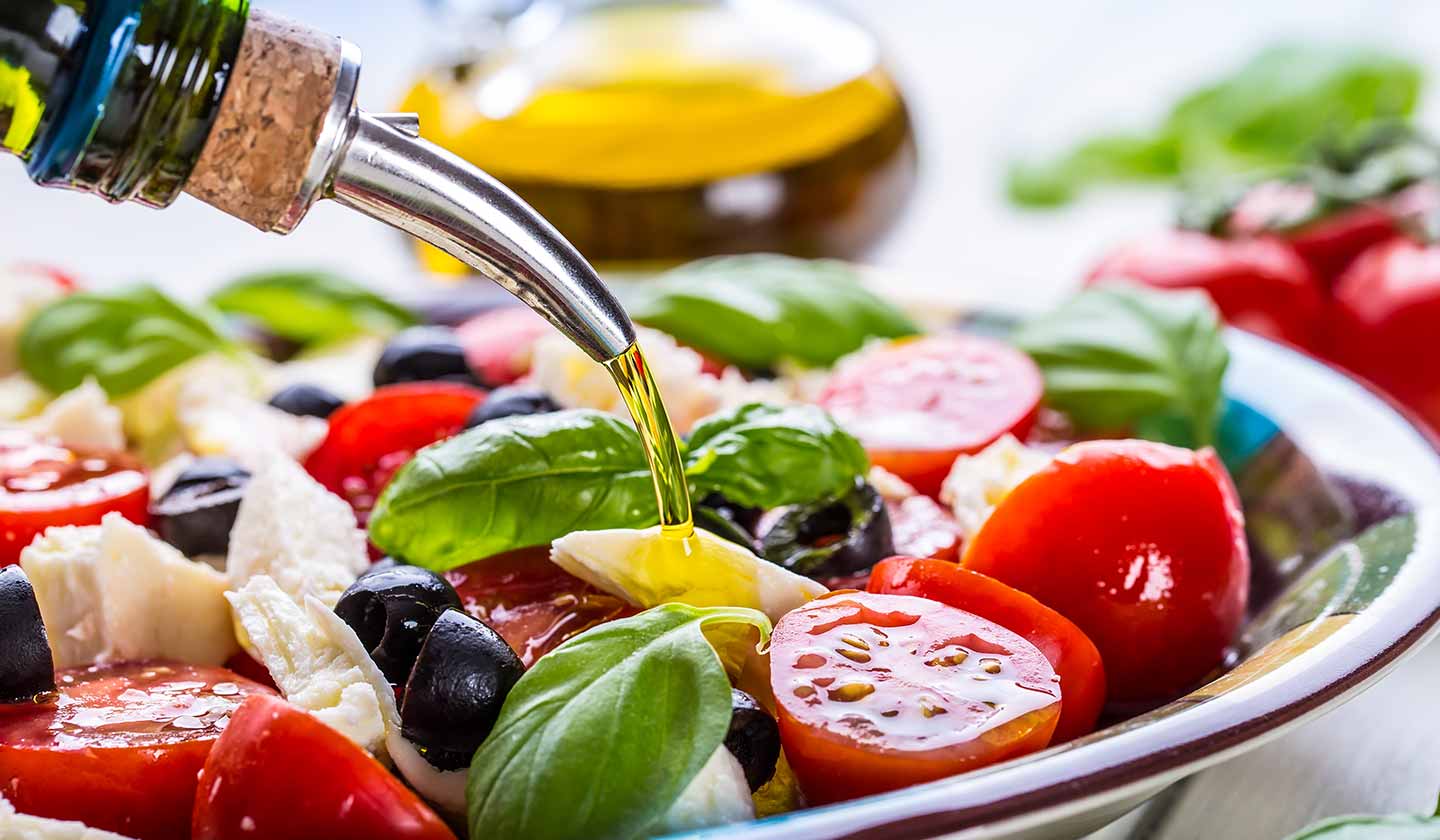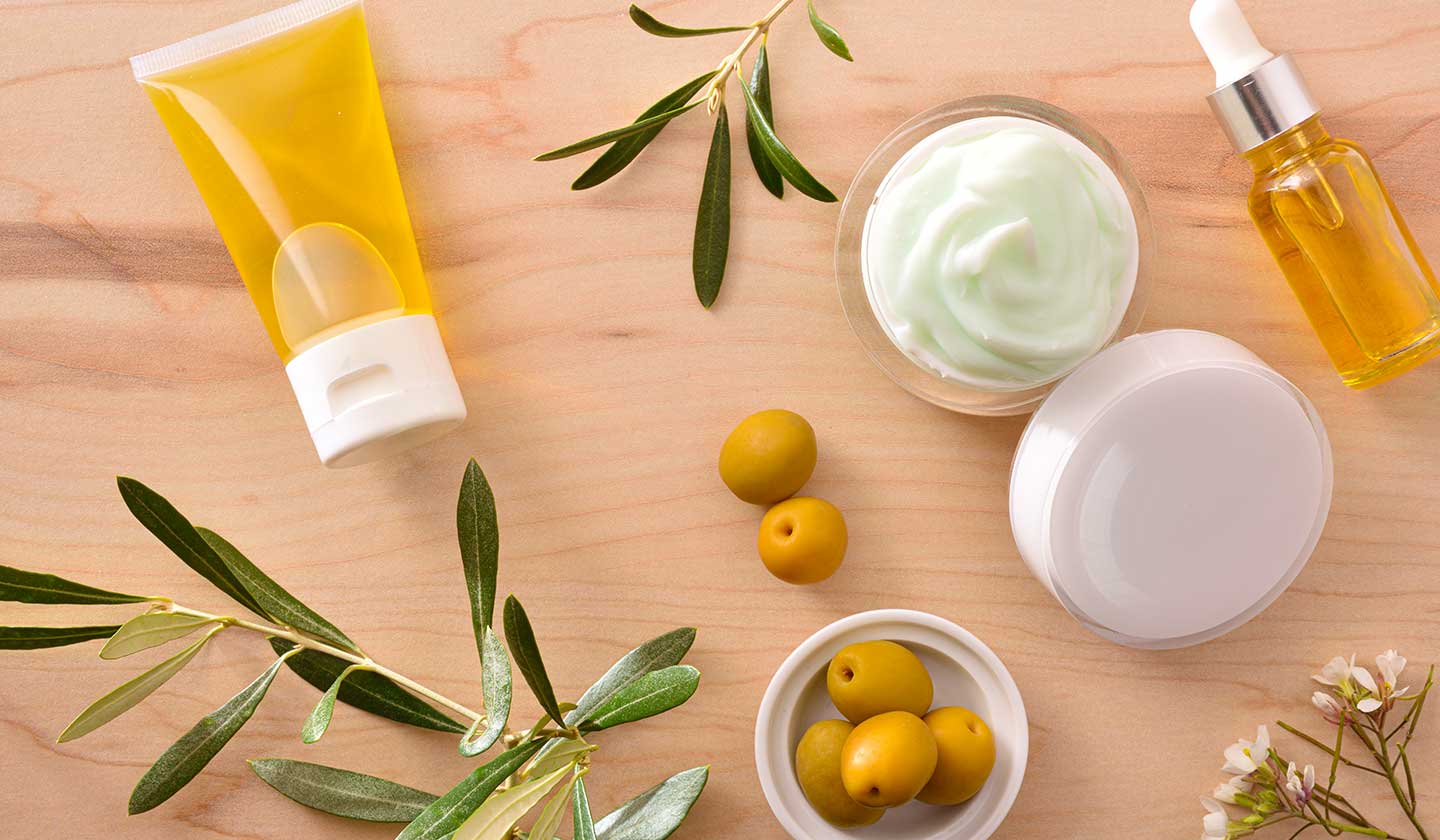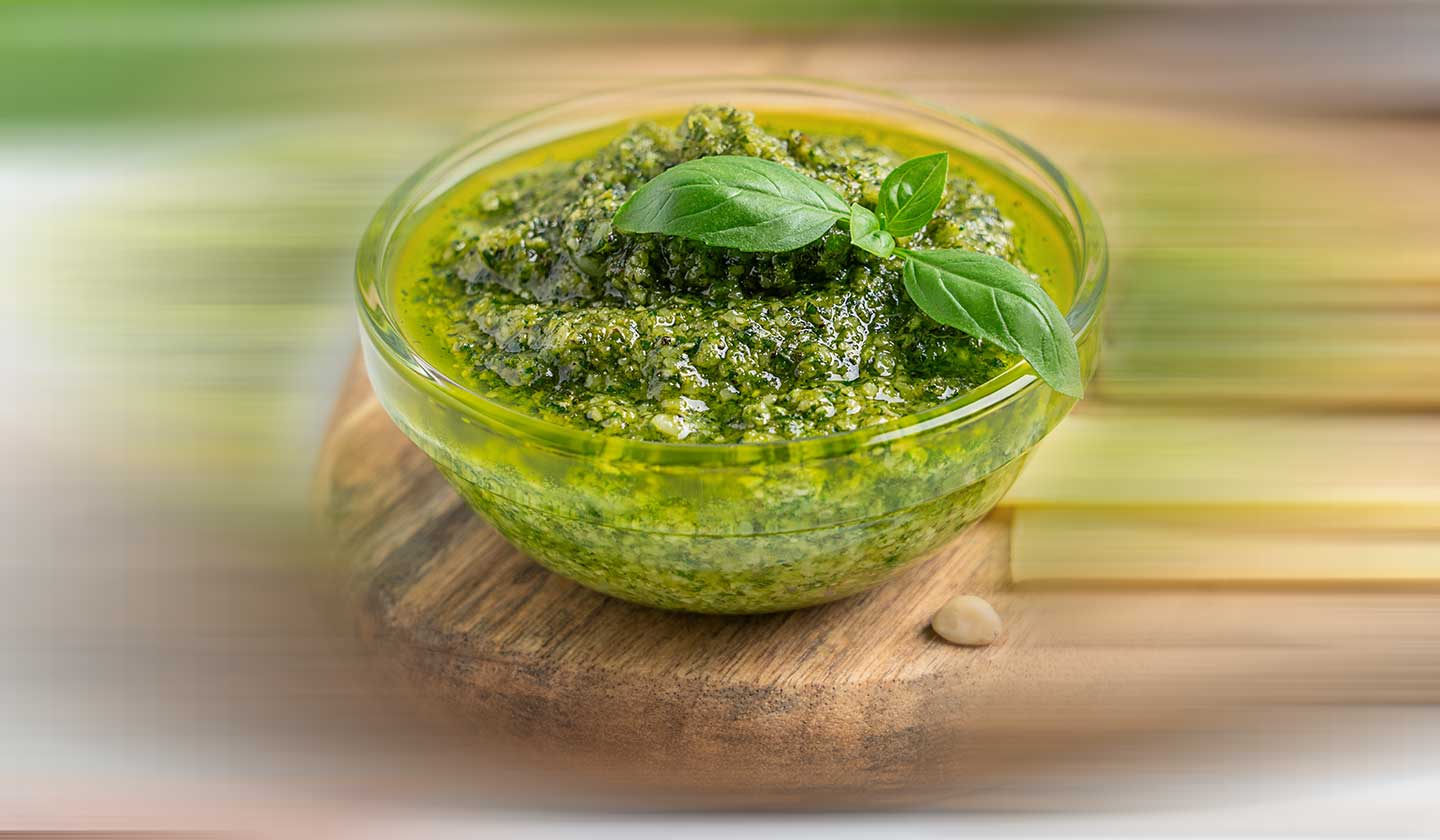Food
The multiple benefits of olive oil

Virgin olive oil is a 100% natural fruit juice extracted from the olive (Olea europaea) and has been part of the dietary habits of the Mediterranean people since this entire extensive region was inhabited.
The Egyptians were already using it 6,000 years ago, and it was one of the main products traded by the Phoenicians. Throughout the ages its importance resulted from the many uses given to it: food, medicine, and beauty, for example.
It was also used as fuel for lighting, as lubricant for agricultural tools, and as an essential element in many religious rites. Although for some years it was underrated, today it has been the object of scientific research, whose results prove its numerous beneficial properties.

Several types of olive oil
There are several types of olive oil that depend on the different varieties of olives, their degree of ripeness, soil and climate. To obtain an extra virgin olive oil, the hand-picked olives must be transported immediately to the mill to avoid fermentation, which would increase the degree of acidity. They are then washed, crushed, and mixed with water. In the end, the oil is separated from the water by centrifugation.
This process, called first cold pressing, results in a first quality olive oil, guaranteeing the essence of the vitamins and fatty acids that make it a therapeutically beneficial product. The denomination of the various types of olive oil differs according to their acidity content. Thus, virgin olive oil does not exceed 2°, while extra virgin olive oil has an acidity level of 1°. Among others, there is also the special extra virgin olive oil, with an acidity of up to 0.7.
Fatty acids and antioxidant properties
Olive oil is composed mostly of monounsaturated fatty acids (70%), of which oleic acid stands out. This food has other equally important components such as vitamin E and A and other phenolic compounds, which give it antioxidant properties.
We often have the idea that all fats (lipids) are harmful to us. In fact, they are essential for our health when eaten in adequate quantities with the rest of the food. I am referring in particular to unsaturated fats (mono and polyunsaturated) found in vegetable oils and fish, to the detriment of other saturated fats of animal origin.
It is recommended that fats should represent about 30% of total energy intake, or 35% if it comes from olive oil. Fats perform structural functions in our bodies, make up the membranes of cells and participate in metabolic activities. Fats transport and allow the absorption of certain vitamins (A and D) and other nutrients.

The basis of the Mediterranean diet
The importance of this food is such that, when studying the dietary habits of different populations, the international medical community found that the diet rich in olive oil, particularly in the Mediterranean countries, could be the basis for the low cholesterol levels and a low incidence of cardiovascular diseases of the people inhabiting these countries, compared to the inhabitants of the United States and Northern Europe.

Benefits of Olive Oil in our Health
Due to its high content of monounsaturated fatty acids, eating olive oil helps reduce bad cholesterol (LDL) while maintaining the level of good cholesterol (HDL). On the other hand, vitamin E has an antioxidant function on the artery walls. Thus, it helps prevent the development of cardiovascular diseases such as atherosclerosis, thrombosis, heart attacks, and strokes. It also helps prevent diabetes by promoting metabolism and improving sugar assimilation and glucose tolerance.
The consumption of this food helps protect the digestive system by preventing excess acid in the stomach. It also contributes to the proper functioning of the gallbladder, promotes the assimilation of nutrients, and helps regulate intestinal transit. According to numerous researches, the consumption of olive oil may contribute to the prevention of some types of cancer, especially breast cancer.
Due to its antioxidant properties, it helps fight premature aging and benefits the peripheral nervous system, as well as the brain. This food promotes bone mineralization by facilitating the absorption of calcium and vitamin D, helping in the growth and prevention of osteoporosis.
To fully benefit from the virtues of olive oil, it should be consumed raw, without prior heating, and preferably of organic origin. For this reason it is ideal for seasoning salads and vegetables. You can also substitute olive oil for other fats used in all kinds of cooking. Even for frying you should use olive oil, because other vegetable oils change with heat, generating harmful substances, from 170º C.
Tip
This liquid withstands higher temperatures and does not burn if it does not exceed 180º C. If you don't like its taste in fried foods, you can make a mixture of olive oil (one third or half) and sunflower oil, because the high content of monounsaturates present in olive oil prevents the degradation of sunflower oil.

Use in cosmetics
Olive oil is a great moisturizer and skin toner, so it is widely used in cosmetic items. It is also an excellent massage oil and is added to essential oils in aromatherapy.
In short, whenever possible try to incorporate this food of high nutritional value into your diet, because besides the unique flavor it gives to food, it is one of the healthiest sources of lipids known.
Recipes

Olive pâté
A great option for this pâté to be used is for breakfast, snacks and even for receiving guests.
Ingredients:
- 8 pitted olives
- 20 g light cream
- 20 g ricotta cheese;
- 1 teaspoon extra virgin olive oil
- 1 sprig of parsley to taste.
Preparation:
- Mix all ingredients in a blender and leave in the fridge to chill, can be served with rolls or toast.

Olive Sauce with Basil
This sauce is refreshing, ideal for dressing salads and even as an accompaniment to other dishes.
Ingredients:
- 7 pitted olives
- 2 sprigs of basil;
- 2 tablespoons of vinegar;
- 1 tablespoon extra virgin olive oil.
Preparation:
- Chop all ingredients into small pieces, mix with vinegar and olive oil, let stand for 10 minutes, serve immediately afterwards.

Green olive broth
The green olive broth can be eaten both for lunch and dinner, it is light, tasty and nutritious, and can also be served with grilled fish or chicken.
Ingredients:
- 1/2 cup pitted olives;
- 100 g spinach
- 40 g arugula;
- 1 leek;
- 2 tablespoons of olive oil;
- 1 clove garlic;
- 400 ml boiling water
- salt to taste.
Preparation:
- In a non-stick pan, saute all ingredients until the leaves wilt, then add the boiling water and let it cook for 5 minutes. After beating in a blender, it is recommended that the leaves be consumed while still hot.

Olive Oil Ice Cream
(2 to 4 people)
Ingredients:
- 3/4 cup sugar
- 1/4 cup + 2 tablespoons water
- 3/4 cup whole milk
- A pinch of salt
- 4 egg yolks
- 1/4 cup + 2 tablespoons extra virgin olive oil
Preparation:
- In a medium saucepan, whisk together the sugar, water, milk, and salt until bubbles form on the side of the pan. In another bowl, whisk the egg yolks until they foam.
- Continue whisking while adding the liquids in a thin stream, then pour the mixture into the pan.
- Stir over medium heat until the cream is thickened or reaches 185°C.
- Be careful that the yolks don't cook! Pour the cream into a bowl and place in an ice water bath.
- Stir until the mixture is cold.
- Transfer to a container with a lid and refrigerate overnight.
- Add 1/4 cup of olive oil to the cream while beating with a fork - the mixture should thicken and become smooth.
- Taste to decide if you need to add the extra two tablespoons of olive oil - the flavor of the olive oil will get stronger as the ice cream ages.
- If you have an ice cream machine, put the mixture in the machine.
- If you don't have one, store the custard in the freezer until frozen.
Ana Neto
(Pharmaceutical)






